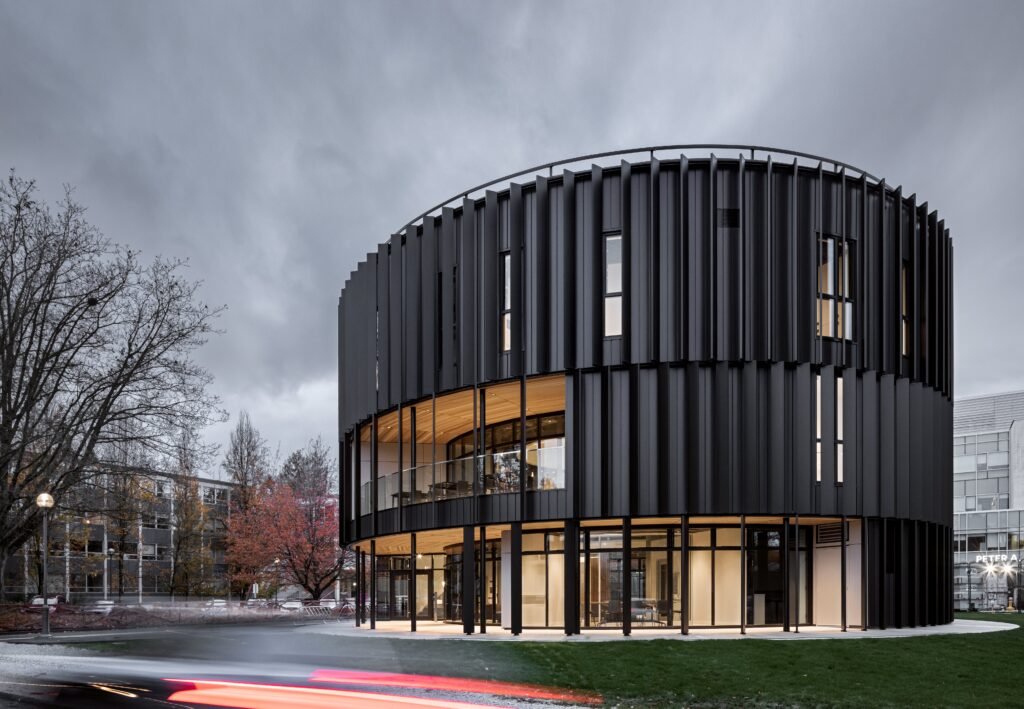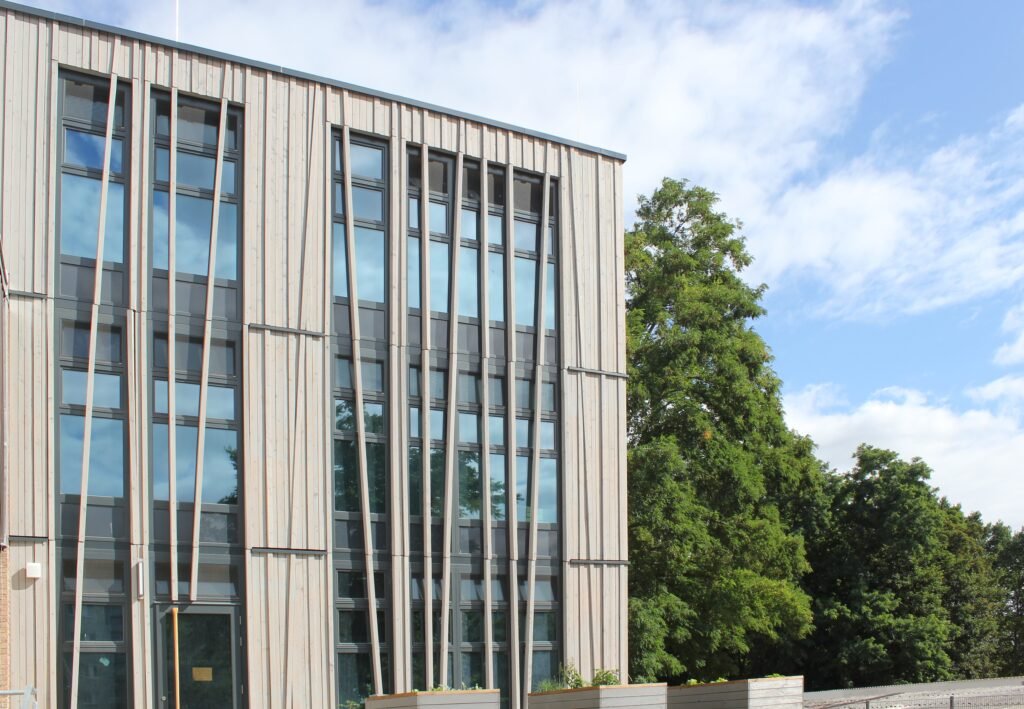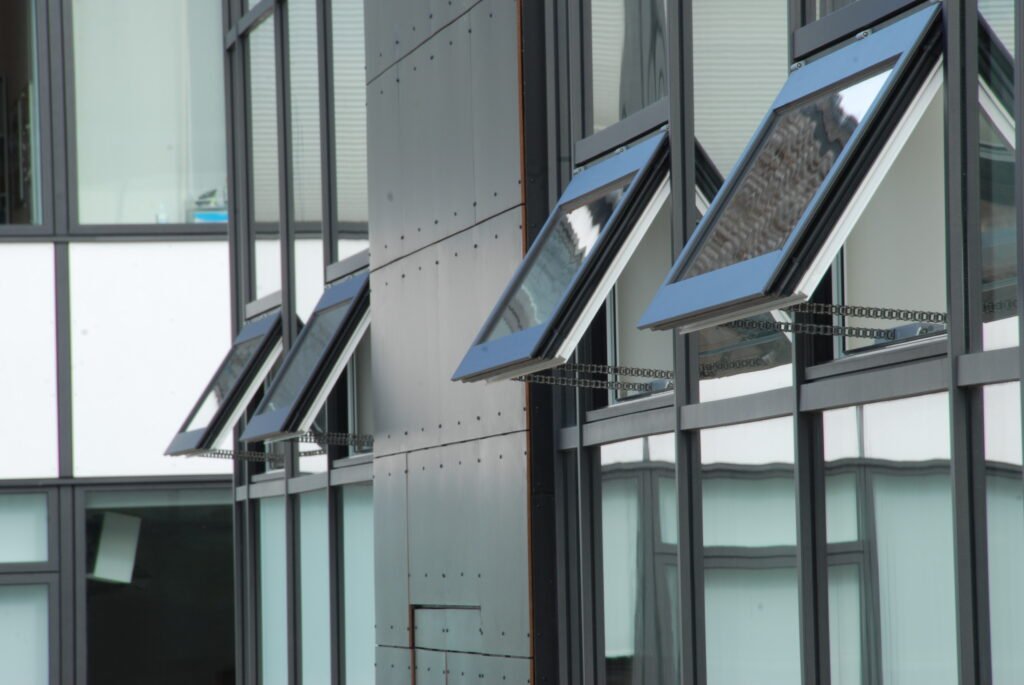Cutting Energy Costs and Improving Air Quality with Natural Ventilation Technology
Lina Svaldenienė
Natural ventilation is a clever solution that enhances indoor air quality and reduces energy consumption in buildings. Fresh air enters the building through automated windows whose opening angles are adjusted based on meteorological conditions and indoor air quality. A smart system determines how wide to open the windows. This technology is superior to mechanical ventilation systems because it uses less energy and is adaptable to older buildings.

One of the key benefits of natural ventilation is its low energy consumption, making it an ideal solution for manufacturers looking to reduce their energy costs. Unlike mechanical ventilation systems that rely on energy-intensive equipment, natural ventilation uses wind and temperature differentials to create pressure differences and move air. By implementing natural ventilation, manufacturers can significantly lower their energy consumption and operating costs while improving indoor air quality for their workers.
How Smart Natural Ventilation Systems Work
Smart natural ventilation systems use sensors to monitor weather conditions outside and indoor air quality factors such as temperature, CO2 levels, and natural lighting. This data is analyzed by control systems that automate the opening and closing of windows and facades, allowing the optimal amount of fresh air to enter without causing drafts or excessive heat loss. The result is improved indoor air quality and occupant comfort, which can lead to higher productivity and better health outcomes.
Denmark-based company WindowMaster specializes in manufacturing and supplying automated ventilation solutions to customers in several countries. Their systems are primarily used in public buildings such as schools and offices, as well as large residential buildings with conservatories. However, due to potential security risks associated with leaving windows open in private homes, the company focuses on serving public rather than private customers.

Flexibility of Smart Natural Ventilation Systems
While smart natural ventilation is an energy-efficient and cost-effective solution for many buildings, it may not be suitable for all climates. In particularly hot or humid regions, cooling the building with outdoor air may be challenging, and additional cooling systems may be required. Nonetheless, smart natural ventilation systems can be adapted to colder climate zones, as demonstrated by WindowMaster’s successful installations in Norway and Sweden.
Natural ventilation systems can also be beneficial in manufacturing facilities. By using a light sensor, the ventilation system can detect the amount of natural light in the facility and adjust ventilation accordingly. For instance, if there is direct sunlight, the facility may become too warm, triggering the ventilation system to open windows or vents to allow fresh air to circulate and cool down the space. Conversely, if the facility becomes too dark, indicating that there are no people present, the ventilation system can close windows or vents to save energy and maintain a comfortable temperature.

Study by Fraunhofer Institute
Studies comparing the energy consumption of naturally ventilated facilities with those using mechanical systems have shown that natural ventilation can result in significant energy savings. Hybrid ventilation, which combines both natural and mechanical systems, can be particularly effective. Mechanical ventilation may be more efficient in colder months, while natural ventilation can be more cost-effective during warmer months. In addition, natural ventilation can improve indoor air quality by reducing concentrations of pollutants and providing fresh air.
Research by the Fraunhofer Institute for Building Physics has shown that natural and hybrid ventilation systems can significantly reduce energy consumption and CO2 emissions in large facilities. The study compared an almost 3000m2 office building with natural, mechanical, and hybrid ventilation systems in various European locations. The results showed that natural ventilation consumed between 9-11 kWh/m2/year, while mechanical ventilation consumed between 20-25 kWh/m2/year. Hybrid ventilation resulted in even greater energy savings, consuming only 7-8.5 kWh/m2/year. According to the Fraunhofer Institute’s calculations, over a 20-year period, CO2 emissions from electricity and heating were significantly lower with natural and hybrid ventilation compared to mechanical ventilation systems. Additionally, natural ventilation had a life cycle cost that was five times lower than mechanical systems, while hybrid ventilation was 2.5 times cheaper.





